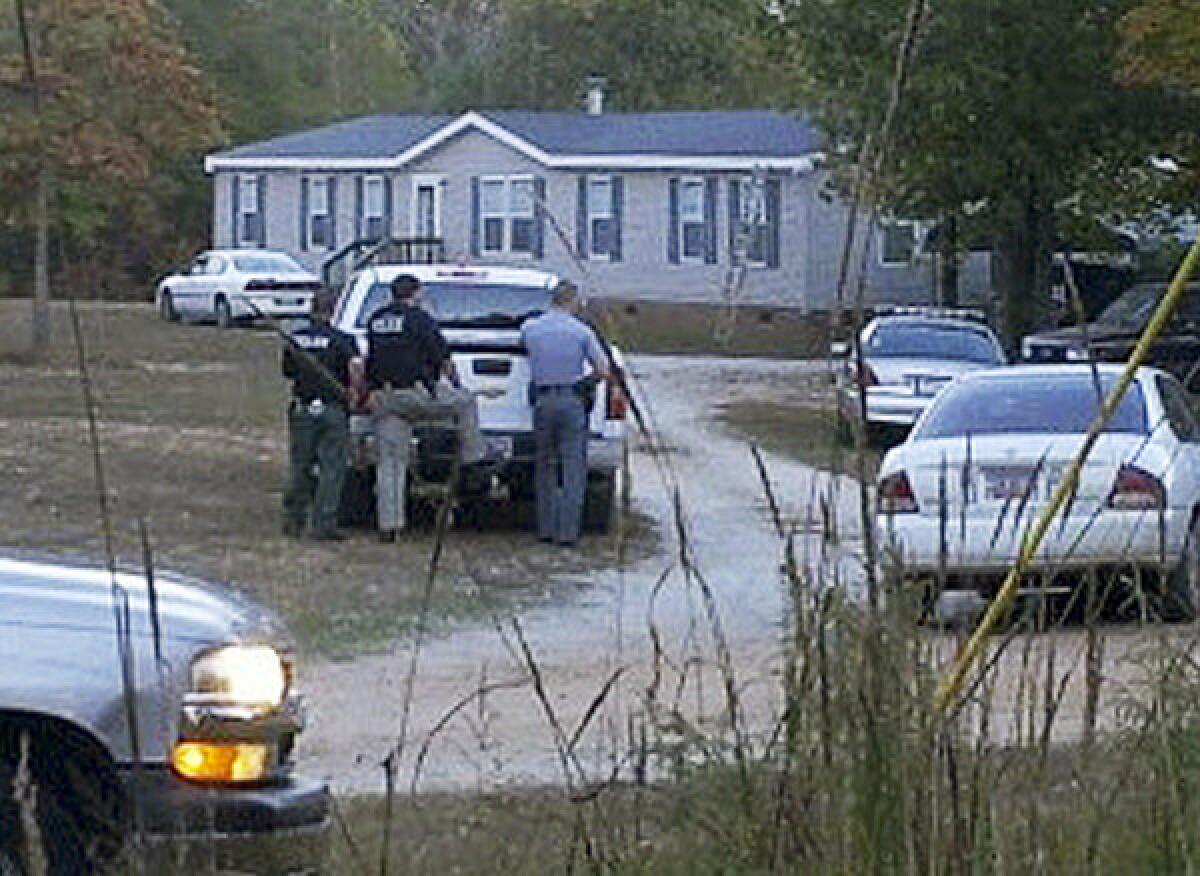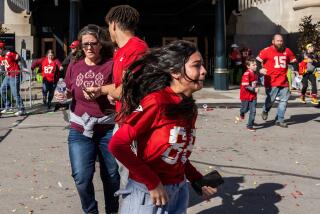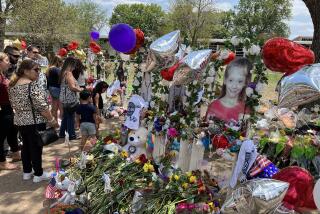Four days, four massacres, 21 dead -- and as always, few answers

- Share via
If you bundled the attacks all together into one brutal event, it would have been the worst massacre since Adam Lanza walked into an elementary school in Newtown, Conn., last December.
Instead, America’s latest criminal tragedy has been doled out in bloody increments, just as senselessly as any mass shooting, and with no less of an astonishing casualty total: 21 people dead, after four days of inexplicable violence in four states.
In Phoenix: a disturbed pharmacist and former financial blogger, who had argued with his neighbors over their barking dogs, took his shotgun next door and killed four members of the Moore family -- plus two of their dogs -- before killing himself Saturday morning.
In Brooklyn, N.Y.: a troubled Chinese immigrant, said to be jealous of his relatives’ success in the United States, stands accused of slaughtering a cousin-in-law and her four small children with a butcher knife at their apartment on Saturday night.
In Terrell, Texas: a small-time criminal is accused of unleashing eight hours of terror on the town of Terrell on Monday night, killing five people in four locations -- his mother, his aunt, two acquaintances and a convenience-store worker -- before his arrest after a high-speed chase.
In Greenwood, S.C.: an unknown man, who called 911 to say he was planning on hurting himself, hung up and instead apparently killed three adults, two children, and then himself in what officials think may be a domestic-violence-related incident. Greenwood County Sheriff Tony Davis told reporters it might be the worst crime scene he’d seen in 40 years of police work.
There has been no suggestion that any of these attacks are related; nor is there much reason to think they would be.
Instead, they’re events bound together by a mutual senselessness, and when viewed from a step back, the past four days’ killings reflect a more basic reality.
Events like these -- in each a handful of people were homicide victims, unlike the steep toll of Newtown, or of Aurora, Colo. -- are a relatively common if largely unacknowledged staple of American crime.
Every year, according to FBI data, at least 12,000 Americans are killed in homicides all over the country, a number that has now long been dropping for reasons that criminologists don’t really agree on.
Cities once ravaged by drugs and gang violence in the ‘80s and ‘90s have now gotten so safe that experts argue you’re more likely to get hurt if you live in the country, where car crashes help make injury-related deaths more common than in urban areas.
And in a reflection of the times, the national debate over public safety has quietly shifted.
The old concerns over drug dealers and gang violence have slowly been edged out by concerns over mass shootings, the worst of which spurred Congress this year to try (and fail) to pass a federal gun-control bill with the support of victims’ families.
Just watching the news, it’s certainly felt as if massacres are happening more often -- but are they really? It’s tough to say; everyone seems to keep different figures.
Last week, U.S. Atty. Gen. Eric H. Holder Jr., the nation’s top law-enforcement official, said Justice Department figures show that mass shootings have tripled in recent years.
The Associated Press reported that from 2000 to 2008, 324 people were shot and 145 were killed in mass shootings; from 2009 to 2012, 404 people were shot and 207 people were killed, amounting to a fraction of the nation’s annual homicide totals, but a notable increase nonetheless.
A Justice Department spokesperson couldn’t immediately be reached for clarification on how the numbers were gathered -- which matters.
A Texas State University study released in March on the frequency of “active shooters” between 2000 and 2010 -- showing that active-shooter events nearly tripled at the end of the aughts -- shows just how tortuous the definition of a mass shooting can get:
An active shooter event involves one or more persons engaged in killing or attempting to kill multiple people in an area (or areas) occupied by multiple unrelated individuals. At least one of the victims must be unrelated to the shooter. The primary motive appears to be mass murder; that is the shooting is not a by-product of an attempt to commit another crime. While many gang-related shootings could fall within this category, gang-related shootings were excluded from this study because gang-related shootings are not considered to be active shooter events by the police.
Got it? Gang violence doesn’t count; nor does domestic violence, even when a whole family is slaughtered. And of course, such a tally excludes extremely public mass attacks like the Boston Marathon bombings or intensely private rampages like Saturday’s Brooklyn stabbings, since the suspects didn’t use guns.
That rankles Northeastern University criminologist James Alan Fox, who in the last couple of years has dissented from specially tailored tallies (such as ‘Mother Jones’) that insist mass shootings and spree killings are on the rise.
“Sometimes the criteria are arbitrary, sometimes they’re hard to apply, and it tends to be a little subjective,” Fox told The Times last week. “How do you classify what workplace shootings count and what don’t count?”
He says that his numbers (which count only shootings) show no big fluctuation: There are usually about 20 mass shootings a year that kill four or more people, many of which make no long-term splash with politicians or the media.
And for Fox, a casualty is a casualty.
“As far as people killed, does it matter if there’s two shooters, one shooter, it’s in a public place, a semi-public place, a private place, or in a home?” Fox asked. “Does it matter where there was some military motive?”
ALSO:
NYPD’s Raymond Kelly walks out of talk after heckling
Trayvon Martin’s mother calls for fixes to ‘stand your ground’ laws
Missing Kansas man who slowly died in car wreck left love letter to family
Follow L.A. Times National on Twitter
More to Read
Sign up for Essential California
The most important California stories and recommendations in your inbox every morning.
You may occasionally receive promotional content from the Los Angeles Times.











